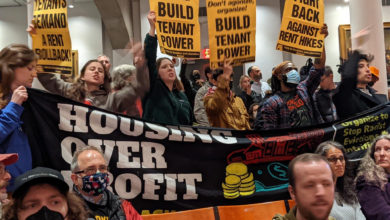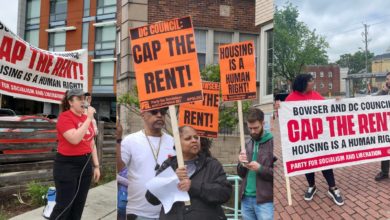Oregon’s eviction moratorium officially ends June 30. Millions of working-class tenants across the state are bracing for an onslaught of evictions after more than a year of pandemic-era difficulties. Two contrasting interests intersect now that the moratorium is ending: more than 89,000 Oregon renters who owe back rent, and thousands of landlords who lost income in the last year while renters struggled to make ends meet after unprecedented job losses. An estimated $375 million in unpaid rent has accrued since April 2020.
Last week, the Oregon state legislature approved a 60-day hold on evictions in cases where the tenant can prove that their application for state rental assistance is pending. This legislation is a temporary remedy to a huge problem: the backlog of rental assistance applications that remain unfunded. The state of Oregon is also waiting on $200 million in federal funds for rental assistance that has yet to appear.
Between May 19 and June 15, around 11,000 Oregon tenants applied for $73 million in rental assistance. Most of this money has not been allocated. A major catch to the rental assistance program is that, with few exceptions, funds are distributed directly to the landlord on behalf of the tenant.
Ultimately, this assistance is just a form of landlord compensation. When funds are applied to a tenant’s debt, it only serves to alleviate debt accrual. The assistance does not prevent evictions, provide housing, pay utility bills, or improve a tenant’s circumstances. Finally, it is unknown exactly how many Oregonians are at risk of eviction when the moratorium ends. But given the number of people who have applied for assistance and are still waiting, the number could be more than 11,000 people.
In December 2020, the Oregon legislature passed a $150 million “landlord compensation fund” to bail out landlords whose tenants have been unable to pay rent during the pandemic. In additional legislation passed last week in anticipation of the end of the moratorium, future applicants to the landlord compensation fund can request 100% compensation for unpaid rent. For tenants whose landlords do not apply for the fund, back rent is now due in February 2022. This deadline has been extended three times since March 2020, without addressing the core issue: no Oregon renter can pay multiple months of back rent at once on top of their regular monthly rent. Some renters already owe upwards of $30,000.
Between August and November 2020, 153 households in the Portland area were evicted despite the moratorium. In the same period, an additional 63 households signed so-called “early move out agreements” to avoid having an eviction order on their record. Landlords chose to evict tenants for a variety of reasons, including foreclosures, “for cause’ violations of rental agreements. Landlords have accused tenants of growing marijuana, having “unauthorized” pets, noise violations, and nonpayment of rent combined with other factors, even though nonpayment could not be the sole reason for the eviction.
While the Oregon moratorium ends June 30, the Biden administration recently extended the federal moratorium by one month through July 31. In theory, the federal extension will continue to protect Oregon renters from eviction for another month. But given the fact that evictions have continued at a regular rate throughout the pandemic despite the federal moratorium, it seems unlikely that this extension will halt evictions.
Tenants’ rights and advocacy organizations across Oregon and in the Portland area, including Community Alliance of Tenants, Portland Tenants United and others, have rallied around better renter protections, faster rental assistance, and the extension of the eviction moratorium. But ultimately, the hard-won reforms are still not enough to protect tenants from harassment, eviction, displacement and debt accrual. The people of Portland demand rent and mortgage cancellation, no pandemic debts, and safe housing for all!






